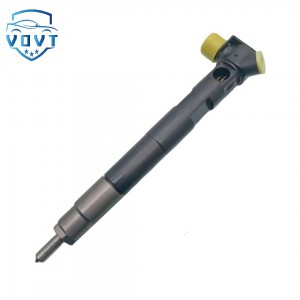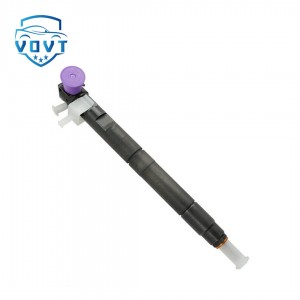High Quality Diesel Fuel Injector 28229873 Auto Parts
Products Description
| Reference. Codes | 28229873 |
| Application | / |
| MOQ | 4PCS |
| Certification | ISO9001 |
| Place of Origin | China |
| Packaging | Neutral packing |
| Quality Control | 100% tested before shipment |
| Lead time | 7~10 working days |
| Payment | T/T, L/C, Paypal, Western Union, MoneyGram or as your requirement |
Diesel injector: the core component of efficient and clean combustion of diesel engines
The diesel injector is the core executive component of the diesel engine fuel system. Its function is to atomize high-pressure fuel into micron-sized oil droplets and accurately spray them into the combustion chamber. Its performance directly determines the engine's power, economy and emission level.
Modern diesel injectors are typically high-pressure common rail systems, which are mainly composed of injectors, solenoid valves, control pistons and needle valve pairs. The number of nozzle holes (4-8 holes) and angles of the injector must match the combustion chamber shape to ensure uniform distribution of oil mist; the solenoid valve response time must be controlled within 0.3ms to achieve a multi-stage injection strategy of pre-injection, main injection, and post-injection. Its working principle is based on pressure difference drive: when the ECU triggers the injection command, the solenoid valve opens to relieve the pressure in the control chamber, the needle valve rises under the action of high-pressure fuel, and the fuel is sprayed out at high speed through the nozzle, and atomized into 10-30μm oil droplets under the action of air shear force.
The performance of the injector is affected by many factors. When the injection pressure increases from 1600bar to 2000bar, the atomized particle size can be reduced by 20%, but the wear of the nozzle hole will be aggravated; insufficient fuel cleanliness will cause the needle valve to be stuck, causing the injection amount deviation to exceed 3%, causing engine shaking. Among common faults, nozzle blockage will cause spray deformity, while poor needle valve sealing will cause dripping, increasing HC and soot emissions.
Technological development shows three major trends: the use of tungsten carbide coatings to extend the life of the nozzle hole by 3 times; piezoelectric actuators increase the response speed to 0.1ms; and intelligent diagnostic systems achieve fault warnings by monitoring the return oil volume. These innovations have driven diesel engines to reduce fuel consumption by more than 8% while meeting the National VI emission standards, providing core support for the sustainable development of diesel engines.























